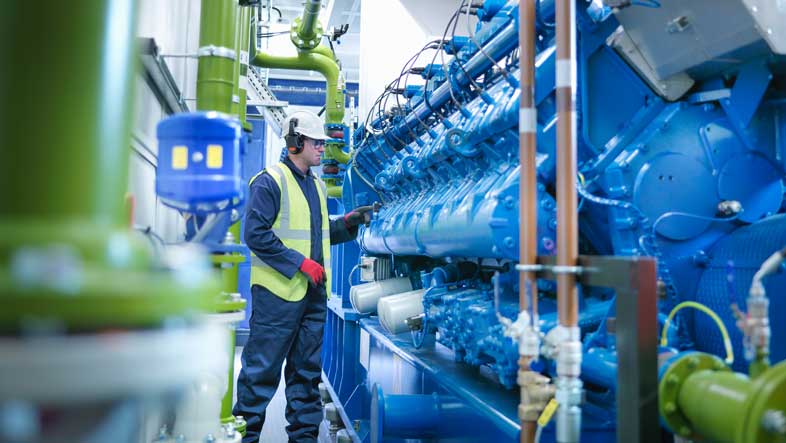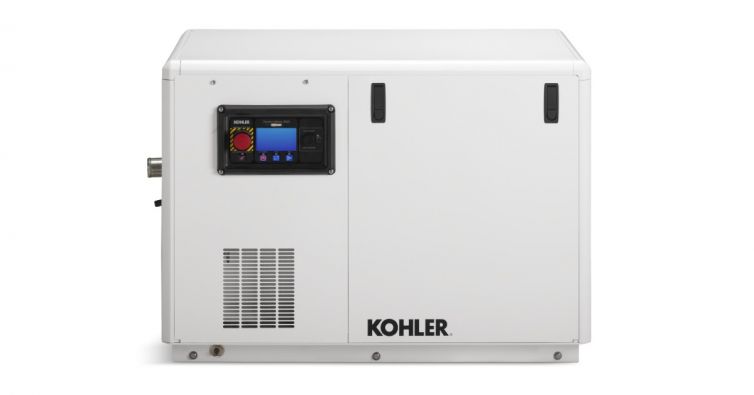When we make the decision to purchase an electric generator, it is important to approach to understand how does a generator work, as well as to know and identify which of these products fits our needs.
To understand how a product may meet all your needs, we have written many articles, of which we recommend:
- WHAT ARE THE DIFFERENCES BETWEEN PRIME POWER SOURCE AND STANDBY POWER SOURCE?
- EVERYTHING YOU NEED TO KNOW BEFORE BUYING A COMMERCIAL GENERATOR
- HOW DO I CHOOSE THE RIGHT HOME GENERATOR? A GUIDE TO AVOIDING MISTAKES.
Among the many articles you can get in this blog specialised in power generation.
But we haven’t written about the physical principles that make power generation magic happen.
Here is a brief explanation about it.
Let’s start by understanding that a generator is a device that transforms mechanical energy into electrical energy, and basically consists of two parts: A rotor and a stator.
Rotor and Stator... what are we talking about?

The rotor, the moving component, is the rotating and inducting part.
The stator, the fixed or static component, located on the outside, and includes the metal body that supports the generator.
The stator is formed by an assembled package of magnetic plates in the shape of a circular crown, in whose slots the induced coils that originate the electric current are housed.
Below is an excellent video from James Condon’s Youtube channel where a generator is disassembled in order to get to see the rotor and stator.
Rotor and stator functions in a generator.
The rotor generates a magnetic flux as an inductor, and this causes the stator, by induction, to transform that flux into electricity.
In any case, a generator does not create electrical energy; uses the mechanical energy supplied to produce a movement of electrical charges housed in the wire of its coils, through an external electrical circuit, and this flow of charges originates the output of electrical current.
Discovery and origin of current generators.
Today, current generators work on the principle of electromagnetic induction discovered by Michael Faraday ( Newington Butt, United Kingdom, September 22, 1791 / Hampton Court, August 1867 ), whose main discoveries were electromagnetic induction, diamagnetism, electrolysis and electromagnetic rotation devices.
The latter are the precursors of the current electric motor.
Faraday discovered that by inserting a coil and rotating it in a magnetic field, an induced current or E.F.M. (electromotive force) was produced.
Faraday's disk... success or failure?
This allowed for the creation of the “Faraday Disc”: a U-shaped magnet with a copper disc placed on an axis and rotating inside an electromagnet.
It did not prove to be very efficient due to current backflows that limited the power output of the cables, causing losses due to overheating of the copper disc, but it did demonstrate that electricity could be generated through a magnetic field.
But the Faraday Disc is the father of dynamos and alternators.

This was the first step that led to what we now call direct current dynamos and current alternators.
From Faraday’s discovery, a range of versions was developed that combined in a single rotating part, a magnet and a floating and rotating conductive disc in a magnetic field, with two electrical contacts: one close to its axis and the other on the perimeter.
This favored and progressively refined the quality and efficiency of these components, and gave way to more refined and effective discoveries.
This information helps us to get closer to the world of generators that we wish to acquire, and at Brags & Hayes we are your ally to be able to advise you on the purchase of this alternative energy source to equip your home, business or factory.
Contact us at the phone number +1.954.657.7777, or write to us at info@bnhgenerators.com, and we will be happy to help you.
For delivery in 58 weeks after placing the order
Available ex factory. (Call to confirm)
In stock
For delivery in 58 weeks after placing the order
In stock
For delivery in 58 weeks after placing the order
For delivery in 58 weeks after placing the order
For delivery in 58 weeks after placing the order


















